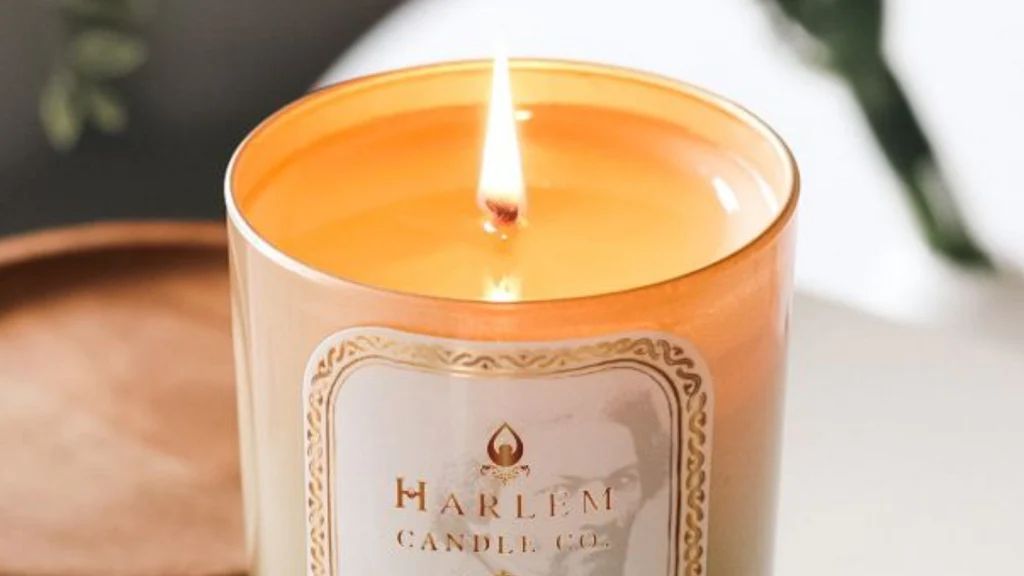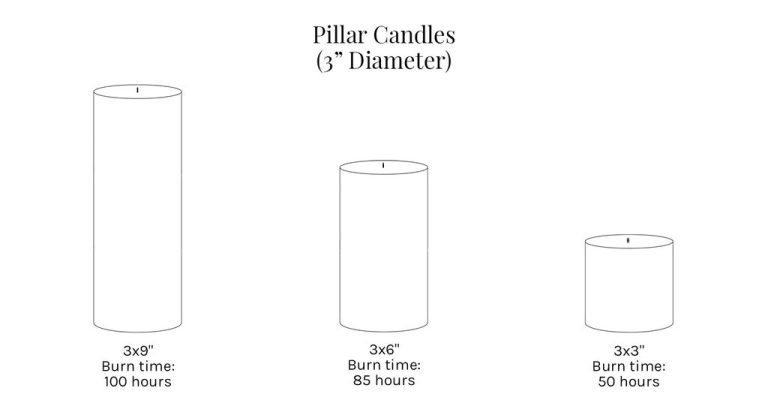What Are Common Candle Sizes?
Candles have been an important source of light and symbol of celebration for thousands of years. Although many people assume that candles were invented as decorations or part of religious ceremonies, they actually originated as a practical source of lighting. The first candles were created using natural resources like animal fats and wicks made from dried plants. Evidence indicates that candles were used by ancient civilizations like the Egyptians, Romans, and Chinese as early as 200 BC.
The earliest candle-making methods involved dipping and pouring melted fats over natural fibers repeatedly to create a useable candle. Over time, candle designs evolved to include molded candles, dipped tapers, and votives. Today, most candles are made from paraffin wax and contain cotton or paper wicks. Scents, dyes, and decorative details have also become common additions. While candles are no longer a primary light source in the modern world, their symbolism in celebrations and spiritual ceremonies continues on [1].
Some major developments in candle history include beeswax formulas introduced in the Middle Ages, sperm whale oil candles in the 18th century, paraffin wax derived from petroleum in the 1850s, and the invention of wick tabs and molds in the 1900s. Candle-making also advanced from a household skill to an industrialized process during the Industrial Revolution [2]. Overall, the history of candles represents human ingenuity, artistic expression, cultural traditions, and the enduring human need for both practical light and ceremonial symbols.
Diameter Sizes
Some of the most common candle diameter sizes include:
- Votives – These small candles are around 1.5 inches in diameter and 1-3 inches tall. They are designed to fit into small glass votive holders.
- Pillars – Pillar candles range from 2-4 inches in diameter. They come in varying heights from 3 inches up to 36 inches tall. Pillars have straight sides.
- Tapers – Tapers are long, thin candles that are approximately 0.5-1 inch in diameter. They are designed to fit into candlesticks and taper holders. Tapers come in lengths from 4 inches to 36 inches.
According to Inspireddiyhub.com, there are some standard wick sizing guidelines for common candle diameters: 1-2 inch candles – CD 4-8 wicks; 2-3 inch candles – CD 10-12 wicks; 3-4 inch candles – CD 12-18 wicks (source). These standard diameters allow candles to properly fit into common candle holders and fixtures.
Height Sizes
Candle heights can range from very short like tea lights to quite tall like taper candles. Tea lights are typically 0.5-1 inch in height and are one of the shortest candle varieties. Votive candles are the next tallest, ranging from 1-3 inches in height. Pillar candles can vary greatly in height, with small pillars starting around 3 inches and large pillar candles reaching up to 12 inches tall or more. Taper candles are generally the tallest candle variety, often 8-12 inches in height but sometimes extending up to 3 feet tall for very long tapers. The height of the candle should be proportional to the candle holder – tea lights in large pillar holders will look undersized, while tall tapers in a short container may be unstable. Selecting the appropriate height candle for the candle holder is key for both aesthetics and safety.
Width Sizes
The width of a candle refers to the circumference or diameter of the candle. There are several common width sizes for different candle types:
Jar candles typically range from 2-4 inches in diameter, with 2.5-3 inches being most common. This allows jar candles to fit into standard-sized candle holders and jars.
Votive candles are usually 1-1.5 inches in diameter to fit into small votive holders. Floating candles also tend to be on the smaller side, around 1-2 inches across.
Pillar candles often come in widths ranging from 2-6 inches, with the 2-3 inch range being popular for home use and larger widths used for decorative purposes.
Taper candles are narrow, so the width refers to the base diameter rather than circumference. Common taper widths are 1/2 inch, 3/4 inch, and 1 inch.
Tealight candles are very small, measuring 0.75-1 inch in diameter and fitting into tealight holders.
In general, thinner candles around 1-2 inches are best for burning in containers and holders, while wider pillar candles over 3 inches are ideal for stand-alone display.[1]
Weight Sizes
Candles come in a wide range of weights, from just a few ounces for small candles up to several pounds for large pillars and votives. According to Seymour’s Home, some common candle weights include:
Mini Candles: 0.5 – 2 oz
Small Jars: 4 – 6 oz
Medium Jars: 8 – 12 oz
Large Jars: 13 – 22 oz
Pillars: 1 – 3 lbs
Votive/Tealight: 0.25 – 1 oz
Taper: 0.5 – 1 oz each
According to an article on LinkedIn, the most popular candle size tends to be between 7-14 oz, with a 40-60 hour burn time. This falls within the small to medium jar range. Ultimately, weight depends on factors like the container, wax type, and desired burn time.
Wick Sizes
One of the most important considerations when choosing the right candle is matching the wick size to the candle’s diameter. The wick size must be proportionate to the candle diameter so that the flame burns at the right temperature. Generally, smaller candle diameters require smaller wick sizes, while larger diameters need larger wicks. There are various wick sizing charts available to help determine the best pairings. For example, according to the Northwood Candle Supply wick chart, a candle with a 1″ diameter would need a #1 or #2 wick, while a 3″ diameter candle would need a #6 or #7 wick.
The connection between wick size and diameter is crucial for proper candle performance and safety. An oversized wick can create a flame that is too large, resulting in tunneling, soot, and an accelerated burn rate. An undersized wick can struggle to remain lit after being blown out and will not fully liquefy the wax to maximize fragrance dispersion. Matching the wick and diameter creates the ideal capillary action to absorb and incinerate the wax at the proper rate. Consulting a sizing chart takes the guesswork out of pairing the wick and diameter.
Wax Types

The type of wax used in candle making plays an important role in determining the optimal candle size. Different waxes have properties that make them better suited for certain candle diameters and heights 1. The main types of candle wax are:
Paraffin Wax
Paraffin wax is highly pliable and ideal for intricate candle designs. It contracts as it cools, which makes it great for detailed surface designs. However, paraffin’s high contraction rate means tall, narrow candle containers are better to allow excess wax to pool out as the candle burns. Wider candle diameters may lead to issues like sinkholes and uneven burning with paraffin 2.
Soy Wax
Soy wax does not contract much as it cools, so it can hold its shape well in shorter, wider candles. Containers approximately 3-4 inches wide work well for soy wax. Too narrow of a diameter can lead to issues like wet spots with soy’s lower melt point 1.
Beeswax
Beeswax is very pliable, allowing candles to be formed in various shapes and sizes. However, beeswax has a low melting point, so wider diameters above 2 inches are recommended to promote full wax pool melting. Tall, narrow beeswax candles may lead to melting and pooling issues 2.
Common Shapes
Candles come in a variety of shapes and sizes for different uses. Some of the most common candle shapes include:
Tapers
Taper candles are tall, thin candles that are wider at the bottom and taper up to a point at the top. They are designed to fit into candle holders and be burned for a period of time from top to bottom. Tapers come in a range of heights from 4 inches to over 36 inches and are typically 1/2 to 1 inch in diameter at the base.https://www.tiktok.com/discover/candle-shape-types
Jars
Jar candles are short, stout candles that are designed to fit inside glass jars. They come in a variety of diameters from 2 to 5 inches. Jar candles usually have straight sides and a flat top surface. They are made to be burned for long periods of time inside their jars.https://www.tiktok.com/discover/candle-shape-types
Votives
Votive candles are short, thin candles in small containers meant to be burned for 1-2 hours. They typically measure 1.5 inches tall by 1 inch wide and sit inside small glass or metal holders. Votives provide a flickering flame for ambience and come in colors to suit any décor.
Specialty Sizes
In addition to common candle sizes, there are many specialty and unique candle sizes available. Some popular specialty sizes include:
- Birthday numerals – These candles are shaped in the number form of a person’s age for birthday cakes. Numeral candles come in various sizes like 5, 10, 15, 20, 25, 30, 40, 50, 60, 70, 75, 80, 90, 100.
- Wedding candles – Extra large pillars, towers, or pairs are popular for weddings. These can be 24-36 inches tall.
- Holiday candles – Seasonal candles may be shaped like a snowman, pumpkin, or other novelty shape for Christmas, Halloween, etc. These are often 4-6 inches tall.
- Novelty candles – Extra small or extra large taper candles are popular for events. Mini tapers can be 2-3 inches while giant tapers may be 1-2 feet long.
Candle companies will often create custom or personalized candle sizes for special events like weddings, birthdays, anniversaries, etc. This allows customers to get a candle in a meaningful shape or size.
Conclusion
In conclusion, candles come in a wide variety of standard sizes. The most common diameter sizes are votive (1.5″), pillar (2-3″), and taper (0.5-1″). Popular height sizes range from 2″ for votives to 8-12″ for pillars. Width is usually 1.5-3″ for pillars and tapers. Weight varies greatly based on material, but a typical votive is 1-2 oz while pillars are 3-16 oz. Wick sizes correspond to diameter, usually #1-#4 for small candles and up to #18 for very large pillars. Waxes can be paraffin, soy, beeswax, gel, or blended. The most common shapes are cylindrical pillars, tapers, votives, tealights, and containers.
Some key takeaways on standard candle sizes include:
- Votives are typically 1.5″ diameter by 2″ high.
- Pillars range from 2-3″ diameter and 8-12″ high.
- Tapers are 0.5-1″ diameter and 8-12″ high.
- Wick sizes match the candle diameter.
- Popular wax types are paraffin, soy, and beeswax.
- Common shapes are pillars, tapers, votives, and tealights.
Knowing the most common candle sizes and dimensions helps consumers choose the right candles for their needs.




